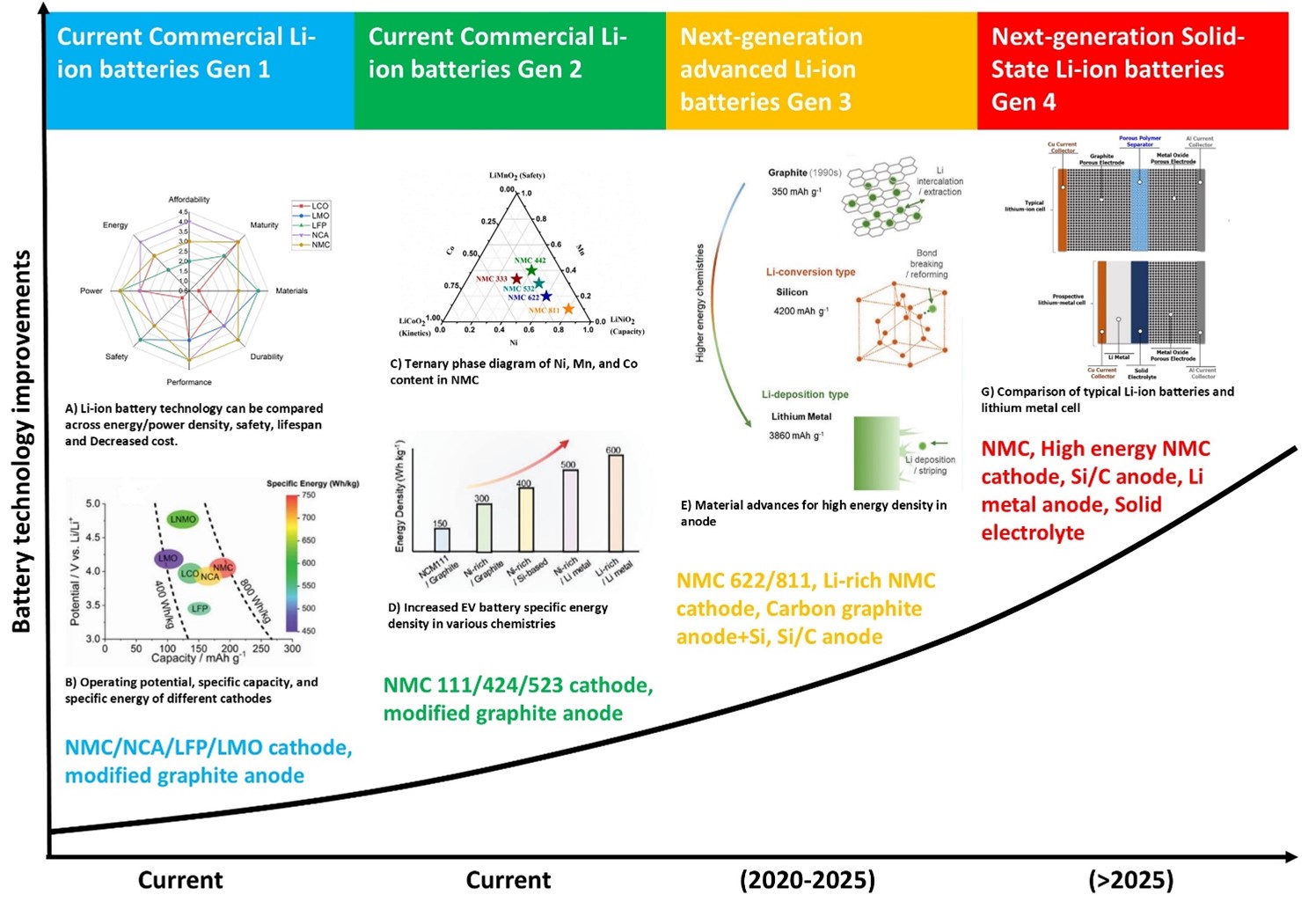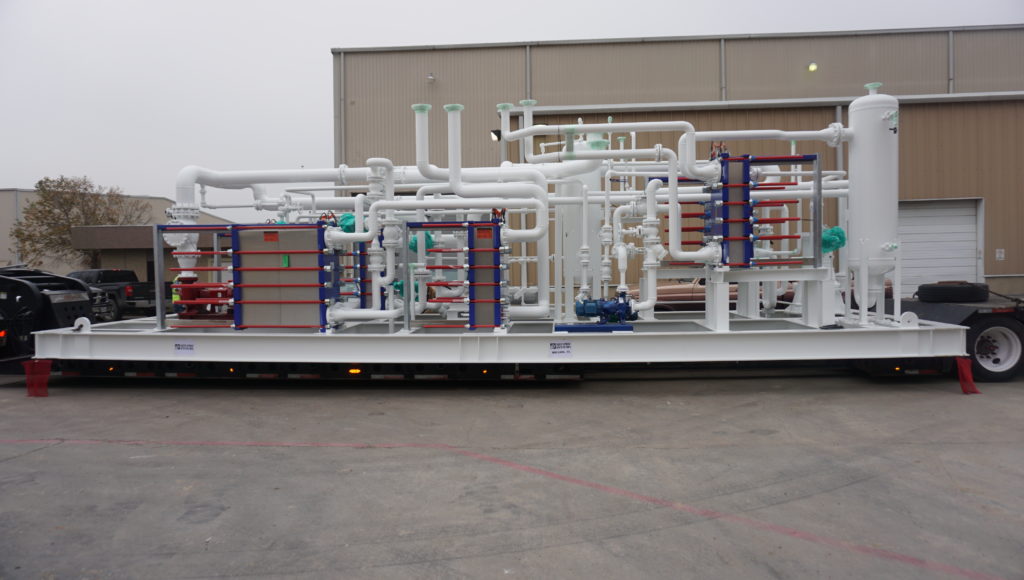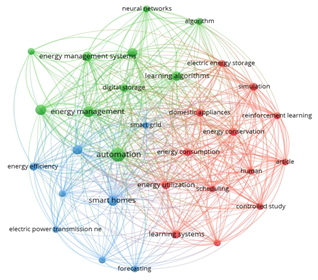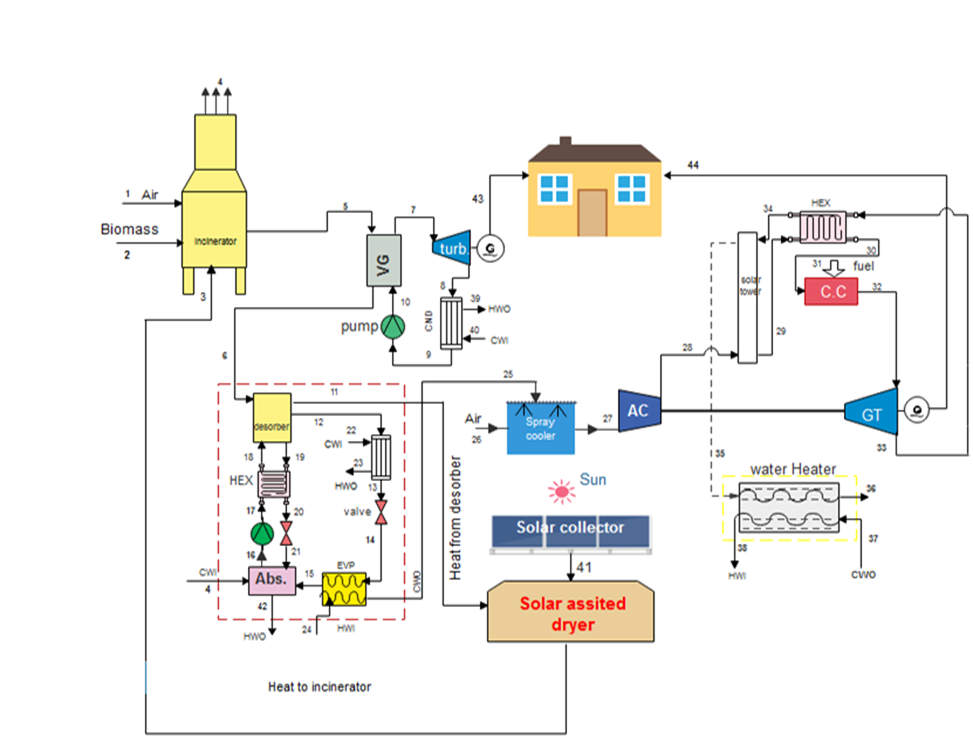Advancements in machine learning for predicting phases in high-entropy alloys: a comprehensive review

Downloads
High entropy alloys (HEAs) are distinguished by their enhanced physicochemical properties, attributed to the formation of various phases such as solid solution (SS), intermetallic (IM), or a combination (SS + IM). These phases contribute distinctively to the microstructure of the alloys. A critical aspect of alloy design revolves around accurately predicting these phases, which has led to the integration of sophisticated data vetting methods and Machine Learning (ML) algorithms in recent research. This review paper aims to provide a comprehensive analysis of the advancements in phase prediction accuracy within HEAs, an essential component in the development of these alloys. HEAs are known for their intricate compositions, offering a wide spectrum of material properties, making them particularly relevant for applications aimed at future sustainability. Phase engineering in HEAs unlocks the potential for creating materials tailored to eco-friendly technologies and energy-efficient solutions. The challenge in predicting phase selection in HEAs is accentuated by the limited data available on these complex materials. This review delves into how advanced data vetting techniques and ML algorithms are being employed to overcome these challenges, thus contributing significantly to sustainable material design. The paper examines various algorithms used in HEA phase prediction, including KNN (K-Nearest Neighbors), SVM (Support Vector Machines), ANN (Artificial Neural Networks), GNB (Gaussian Naive Bayes), and RF (Random Forest). It discusses the testing accuracy of these algorithms in classifying HEA phases, revealing variations in their effectiveness. The review highlights the superior accuracy of ANNs, followed closely by KNN and SVM, while noting the comparatively lower accuracy of GNB. This comprehensive review synthesizes current research efforts in utilizing computational methods to design HEAs, underlining their broader implications in expediting the discovery and development of diverse metal alloys. These efforts are pivotal in meeting the evolving demands of modern engineering applications, thereby contributing to the advancement of materials science.
J. Schmidt, M. R. G. Marques, S. Botti, and M. A. L. Marques, “Recent advances and applications of machine learning in solid-state materials science,” Npj Comput. Mater., vol. 5, no. 1, Art. no. 1, Aug. 2019, doi: 10.1038/s41524-019-0221-0.
“Data‐Driven Materials Science: Status, Challenges, and Perspectives - Himanen - 2019 - Advanced Science - Wiley Online Library.” Accessed: Dec. 21, 2023. [Online]. Available: https://onlinelibrary.wiley.com/doi/full/10.1002/advs.201900808
D. Silver et al., “Mastering the game of Go with deep neural networks and tree search,” Nature, vol. 529, no. 7587, Art. no. 7587, Jan. 2016, doi: 10.1038/nature16961.
“[1604.07316] End to End Learning for Self-Driving Cars.” Accessed: Dec. 21, 2023. [Online]. Available: https://arxiv.org/abs/1604.07316
K. He, X. Zhang, S. Ren, and J. Sun, “Delving Deep into Rectifiers: Surpassing Human-Level Performance on ImageNet Classification,” presented at the Proceedings of the IEEE International Conference on Computer Vision, 2015, pp. 1026–1034. Accessed: Dec. 21, 2023. [Online]. Available: https://openaccess.thecvf.com/content_iccv_2015/html/He_Delving_Deep_into_ICCV_2015_paper.html
S. Liu and Y. Tian, “Facial Expression Recognition Method Based on Gabor Wavelet Features and Fractional Power Polynomial Kernel PCA,” in Advances in Neural Networks - ISNN 2010, L. Zhang, B.-L. Lu, and J. Kwok, Eds., in Lecture Notes in Computer Science. Berlin, Heidelberg: Springer, 2010, pp. 144–151. doi: 10.1007/978-3-642-13318-3_19.
M. Pazzani and D. Billsus, “Learning and Revising User Profiles: The Identification of Interesting Web Sites,” Mach. Learn., vol. 27, no. 3, pp. 313–331, Jun. 1997, doi: 10.1023/A:1007369909943.
“A review of machine learning approaches to Spam filtering - ScienceDirect.” Accessed: Dec. 21, 2023. [Online]. Available: https://www.sciencedirect.com/science/article/abs/pii/S095741740900181X
“Credit scoring with a data mining approach based on support vector machines - ScienceDirect.” Accessed: Dec. 21, 2023. [Online]. Available: https://www.sciencedirect.com/science/article/abs/pii/S095741740600217X
R. Machaka, “Machine learning-based prediction of phases in high-entropy alloys,” Comput. Mater. Sci., vol. 188, p. 110244, Feb. 2021, doi: 10.1016/j.commatsci.2020.110244.
M. Peters, J. Kumpfert, C. h. Ward, and C. Leyens, “Titanium Alloys for Aerospace Applications,” Adv. Eng. Mater., vol. 5, no. 6, pp. 419–427, 2003, doi: 10.1002/adem.200310095.
R. Montanari, B. Riccardi, R. Volterri, and L. Bertamini, “Characterisation of plasma sprayed W coatings on a CuCrZr alloy for nuclear fusion reactor applications,” Mater. Lett., vol. 52, no. 1, pp. 100–105, Jan. 2002, doi: 10.1016/S0167-577X(01)00375-5.
“Nanostructured High‐Entropy Alloys with Multiple Principal Elements: Novel Alloy Design Concepts and Outcomes - Yeh - 2004 - Advanced Engineering Materials - Wiley Online Library.” Accessed: Dec. 21, 2023. [Online]. Available: https://onlinelibrary.wiley.com/doi/abs/10.1002/adem.200300567?casa_token=kY2yhmmuv-sAAAAA:HYOphDuSs_PiiOW6J7_87umuOt04W9ziz32YwXGfFVOgn3_-M2FnXjvQ_E4bgqV1artDbj2fhFYZd7nBtA
“Enhanced strength and ductility in a high-entropy alloy via ordered oxygen complexes | Nature.” Accessed: Dec. 21, 2023. [Online]. Available: https://www.nature.com/articles/s41586-018-0685-y
M. C. Gao, J.-W. Yeh, P. K. Liaw, and Y. Zhang, High-Entropy Alloys: Fundamentals and Applications. Springer, 2016.
“Rare-earth high-entropy alloys with giant magnetocaloric effect - ScienceDirect.” Accessed: Dec. 21, 2023. [Online]. Available: https://www.sciencedirect.com/science/article/abs/pii/S1359645416309570
Noor, Md Fahel Bin, Nusrat Yasmin, and Tiglet Besara. "Machine learning in high- entropy alloys: phase formation predictions with artificial neural networks." Future Sustainability 2, no. 1 (2024): 47-58.
T.-T. Shun, C.-H. Hung, and C.-F. Lee, “The effects of secondary elemental Mo or Ti addition in Al0.3CoCrFeNi high-entropy alloy on age hardening at 700°C,” J. Alloys Compd., vol. 495, no. 1, pp. 55–58, Apr. 2010, doi: 10.1016/j.jallcom.2010.02.032.
Y. F. Ye, Q. Wang, J. Lu, C. T. Liu, and Y. Yang, “High-entropy alloy: challenges and prospects,” Mater. Today, vol. 19, no. 6, pp. 349–362, Jul. 2016, doi: 10.1016/j.mattod.2015.11.026.
Yasmin, Nusrat, Md Fahel Bin Noor, and Tiglet Besara. "Structure and Magnetism of the New Cage-structured Compound HfMn $ _ {2} $ Zn $ _ {20} $." arXiv preprint arXiv:2306.01146 (2023).
B. Mallick, R. Das, S. Banik, Md.F. bin Noor, A. Habib, Performance Enhancement of an Automobile Radiator by Using a Nozzle Arrangement, International Journal of Innovative Technology and Exploring Engineering. X (2019).
Md.F. bin Noor, B. Mallick, A. Habib, Heat storage system: A modern way to reuse and recycle energy to reduce thermal pollution, in: International Conference on Mechanical, Industrial and Energy Engineering, 2018.
Md.F. bin Noor, Md.A.M. Hossain, B. Mallick, A. Habib, Experimental Evaluation with Comparative Steady-State Thermal Analysis of Two-Wheeler Engine Cylinder by Varying Its Material, in: International Conference on Mechanical Engineering and Renewable Energy, 2019.
A. Habib, M. Bhuiya, Md.F. bin Noor, B. Mallick, Biodiesel Production from Castor Seed Oil as an Alternative Fuel for the Compression Ignition (Ci) Engine, in: International Conference on Mechanical Engineering and Renewable Energy, 2019.
Yasmin, Nusrat, Md Fahel Bin Noor, and Tiglet Besara. "Exploring Single Crystals as Promising Thermoelectric Materials." Bulletin of the American Physical Society (2023).
Noor, Md Fahel Bin, Nusrat Yasmin, and Tiglet Besara. "The Exploration and Synthesisof Two Intermetallic Single Crystals." Bulletin of the American Physical Society (2023).
Noor, Md Fahel Bin, Nusrat Yasmin, and Tiglet Besara. "Synthesis and Exploration of Heusler Intermetallics as Potential Catalysts." Bulletin of the American Physical Society (2023).
Yasmin, Nusrat, Md Fahel Bin Noor, Sarah Longworth, and Tiglet Besara. "Synthesis of Cage-structured Compounds for Thermoelectricity." Bulletin of the American Physical Society (2023).
W. Huang, P. Martin, and H. L. Zhuang, “Machine-learning phase prediction of high-entropy alloys,” Acta Mater., vol. 169, pp. 225–236, May 2019, doi: 10.1016/j.actamat.2019.03.012.
L. Qiao, Y. Liu, and J. Zhu, “A focused review on machine learning aided high-throughput methods in high entropy alloy,” J. Alloys Compd., vol. 877, p. 160295, Oct. 2021, doi: 10.1016/j.jallcom.2021.160295.
N. Islam, W. Huang, and H. L. Zhuang, “Machine learning for phase selection in multi-principal element alloys,” Comput. Mater. Sci., vol. 150, pp. 230–235, Jul. 2018, doi: 10.1016/j.commatsci.2018.04.003.
D. B. Miracle and O. N. Senkov, “A critical review of high entropy alloys and related concepts,” Acta Mater., vol. 122, pp. 448–511, Jan. 2017, doi: 10.1016/j.actamat.2016.08.081.
A. Agarwal and A. K. Prasada Rao, “Artificial Intelligence Predicts Body-Centered-Cubic and Face-Centered-Cubic Phases in High-Entropy Alloys,” JOM, vol. 71, no. 10, pp. 3424–3432, Oct. 2019, doi: 10.1007/s11837-019-03712-4.
Z. Zhou, Y. Zhou, Q. He, Z. Ding, F. Li, and Y. Yang, “Machine learning guided appraisal and exploration of phase design for high entropy alloys,” Npj Comput. Mater., vol. 5, no. 1, Art. no. 1, Dec. 2019, doi: 10.1038/s41524-019-0265-1.
D. Morgan and R. Jacobs, “Opportunities and Challenges for Machine Learning in Materials Science,” Annu. Rev. Mater. Res., vol. 50, no. 1, pp. 71–103, 2020, doi: 10.1146/annurev-matsci-070218-010015.
C. J. Stone, “Consistent Nonparametric Regression,” Ann. Stat., vol. 5, no. 4, pp. 595–620, 1977.
“An Introduction to Kernel and Nearest-Neighbor Nonparametric Regression: The American Statistician: Vol 46, No 3.” Accessed: Dec. 22, 2023. [Online]. Available: https://www.tandfonline.com/doi/abs/10.1080/00031305.1992.10475879
“k-Nearest Neighbor Classification | SpringerLink.” Accessed: Dec. 22, 2023. [Online]. Available: https://link.springer.com/chapter/10.1007/978-0-387-88615-2_4
“Euclidean distance mapping - ScienceDirect.” Accessed: Dec. 22, 2023. [Online]. Available: https://www.sciencedirect.com/science/article/abs/pii/0146664X80900544
P. Guillen, M. Robinson, C. Torres, and E. Pereya, “Support Vector Machine Application for Multiphase Flow Pattern Prediction,” Jun. 2018. doi: 10.48550/arXiv.1806.05054.
A. Shmilovici, “Support Vector Machines,” in Data Mining and Knowledge Discovery Handbook, O. Maimon and L. Rokach, Eds., Boston, MA: Springer US, 2010, pp. 231–247. doi: 10.1007/978-0-387-09823-4_12.
“(PDF) Wavelet Support Vector Machine.” Accessed: Dec. 22, 2023. [Online]. Available: https://www.researchgate.net/publication/8345770_Wavelet_Support_Vector_Machine
B. M. H. Romeny, Front-End Vision and Multi-Scale Image Analysis: Multi-scale Computer Vision Theory and Applications, written in Mathematica. Springer Science & Business Media, 2008.
E. Byvatov, U. Fechner, J. Sadowski, and G. Schneider, “Comparison of Support Vector Machine and Artificial Neural Network Systems for Drug/Nondrug Classification,” J. Chem. Inf. Comput. Sci., vol. 43, no. 6, pp. 1882–1889, Nov. 2003, doi: 10.1021/ci0341161.
S. N. Sivanandam, “Introduction to neural networks using MATLAB 6.0,” No Title, Accessed: Dec. 22, 2023. [Online]. Available: https://cir.nii.ac.jp/crid/1130282272202172160
K. Hornik, “Approximation capabilities of multilayer feedforward networks,” Neural Netw., vol. 4, no. 2, pp. 251–257, Jan. 1991, doi: 10.1016/0893-6080(91)90009-T.
“On the Optimality of the Simple Bayesian Classifier under Zero-One Loss | Machine Learning.” Accessed: Dec. 24, 2023. [Online]. Available: https://link.springer.com/article/10.1023/A:1007413511361
E. Alpaydin, Introduction to Machine Learning, fourth edition. MIT Press, 2020.
L. Breiman, “Random Forests,” Mach. Learn., vol. 45, no. 1, pp. 5–32, Oct. 2001, doi: 10.1023/A:1010933404324.
L. Breiman, “CONSISTENCY FOR A SIMPLE MODEL OF RANDOM FORESTS,” 2004. Accessed: Dec. 24, 2023. [Online]. Available: https://www.semanticscholar.org/paper/CONSISTENCY-FOR-A-SIMPLE-MODEL-OF-RANDOM-FORESTS-Breiman/2a42f39add8332a7139d44a6e77496c0571e4f24
Y. Lin and Y. Jeon, “Random Forests and Adaptive Nearest Neighbors,” J. Am. Stat. Assoc., vol. 101, no. 474, pp. 578–590, 2006.
S. Risal, W. Zhu, P. Guillen, and L. Sun, “Improving phase prediction accuracy for high entropy alloys with Machine learning,” Comput. Mater. Sci., vol. 192, p. 110389, May 2021, doi: 10.1016/j.commatsci.2021.110389.
T. Nazir, N. Shaukat, N. ul H. Tariq, R. N. Shahid, and M. H. Bhatti, “A comprehensive strategy for phase detection of high entropy alloys: Machine learning and deep learning approaches,” Mater. Today Commun., vol. 37, p. 107525, Dec. 2023, doi: 10.1016/j.mtcomm.2023.107525.
F. Sustainability, “Machine learning in high-entropy alloys: phase formation predictions with artificial neural networks | Future Sustainability,” Dec. 2023, Accessed: Dec. 27, 2023. [Online]. Available: https://fupubco.com/fusus/article/view/147
“Uncovering the eutectics design by machine learning in the Al–Co–Cr–Fe–Ni high entropy system - ScienceDirect.” Accessed: Dec. 27, 2023. [Online]. Available: https://www.sciencedirect.com/science/article/abs/pii/S1359645419307050
“Theories for predicting simple solid solution high-entropy alloys: Classification, accuracy, and important factors impacting accuracy - ScienceDirect.” Accessed: Dec. 27, 2023. [Online]. Available: https://www.sciencedirect.com/science/article/abs/pii/S1359646220304322
N. Qu, Y. Chen, Z. Lai, Y. Liu, and J. Zhu, “The phase selection via machine learning in high entropy alloys,” Procedia Manuf., vol. 37, pp. 299–305, Jan. 2019, doi: 10.1016/j.promfg.2019.12.051.















